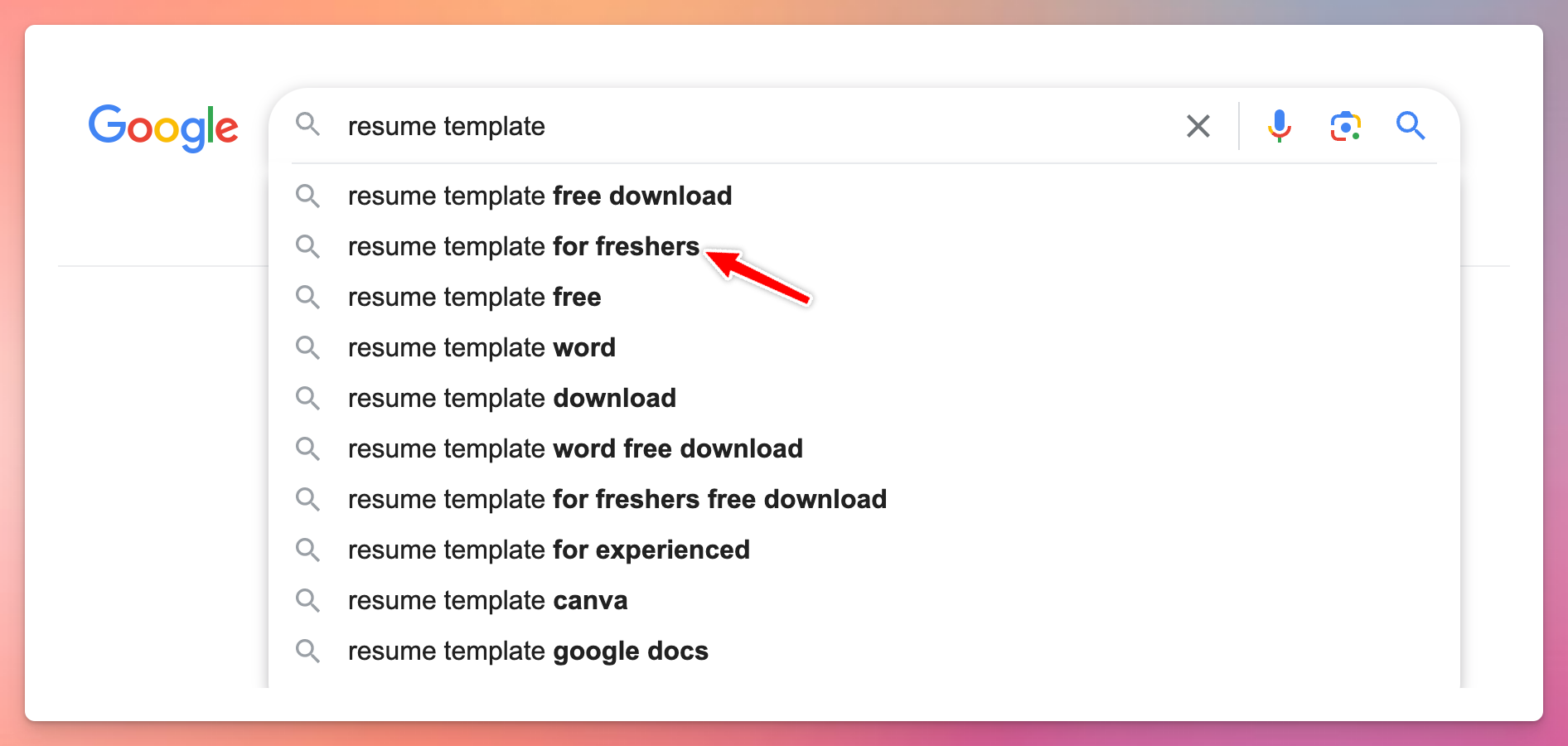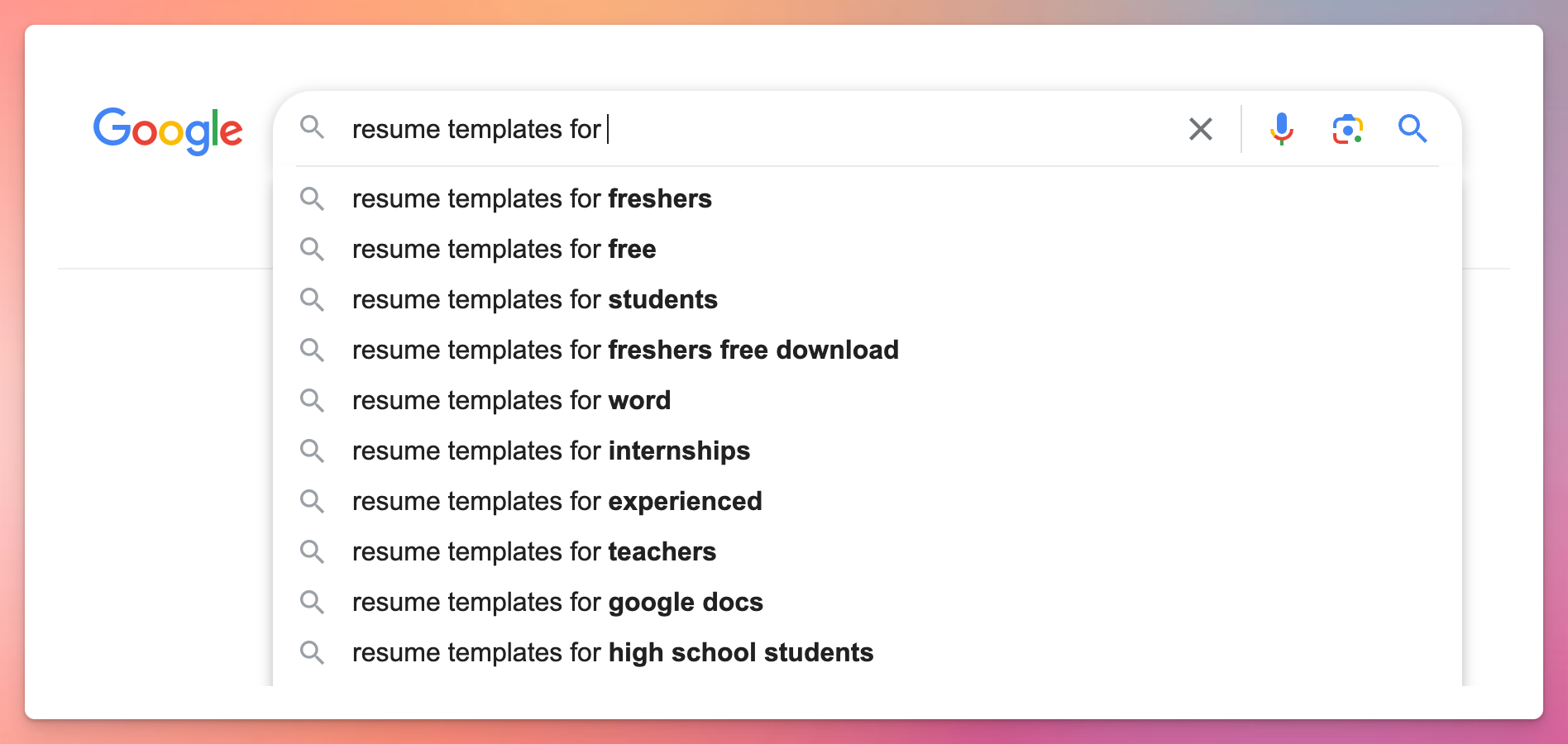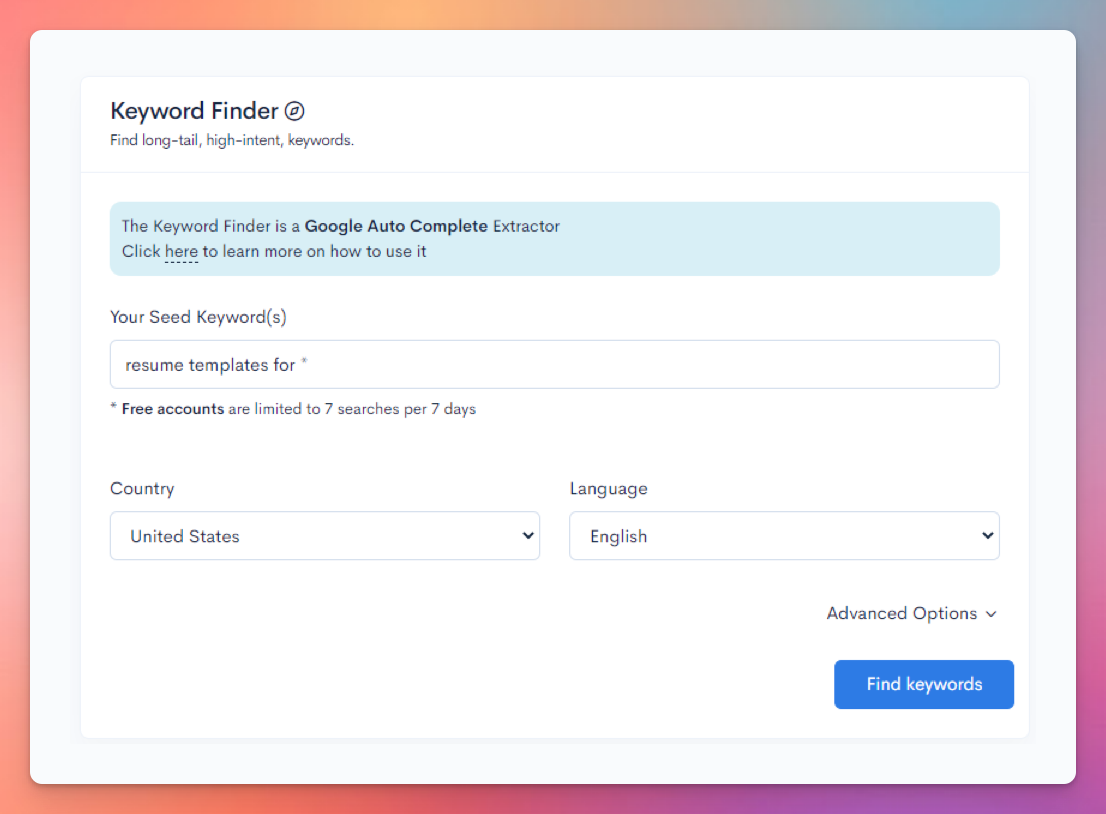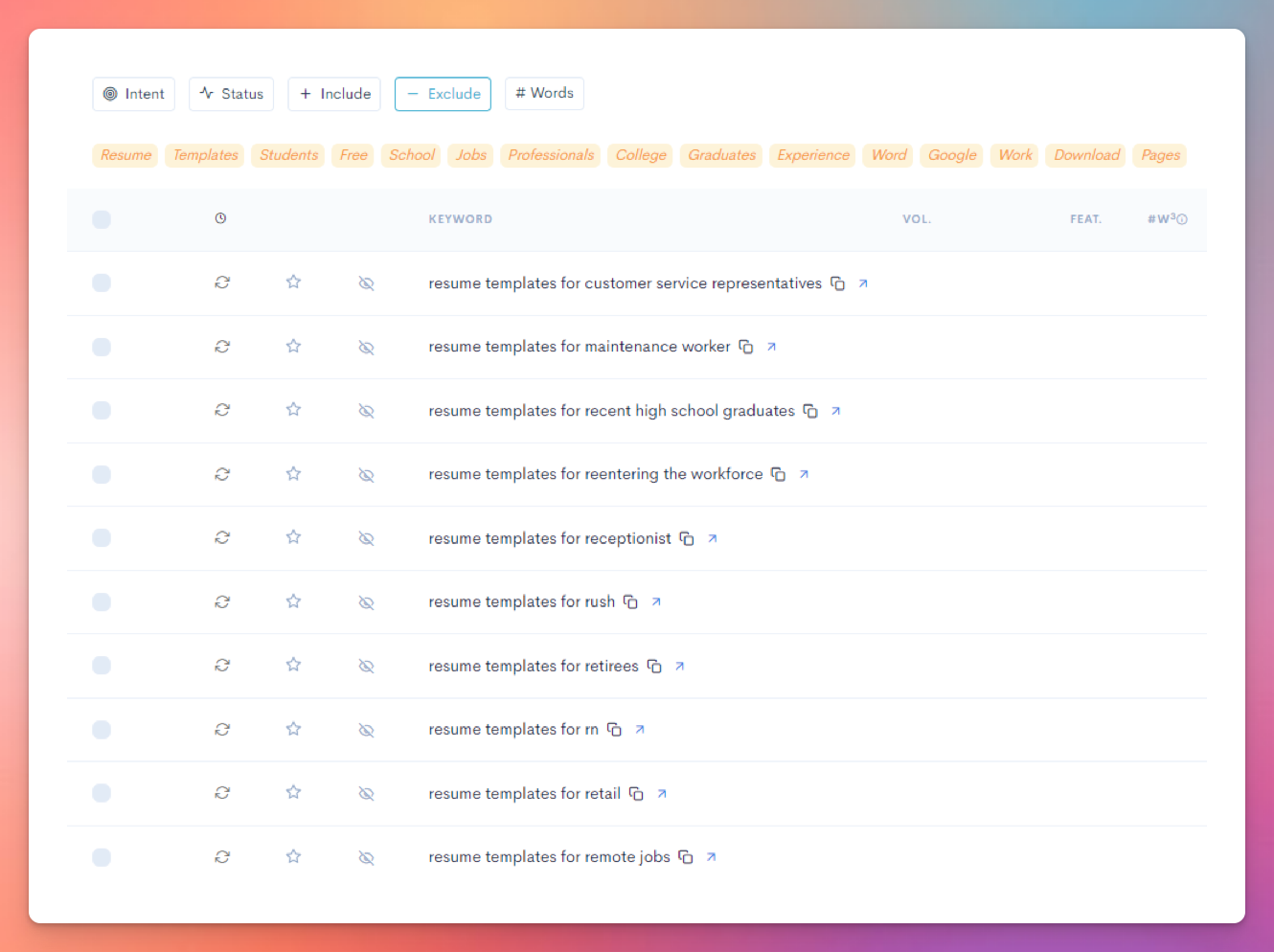Keyword Research
Keyword research is the new market research.
Keyword research is critical for any kind of online marketing. You will find tons of guides and tutorials on how to find profitable keywords.
But when it comes to programmatic SEO, there is no fixed process for researching keywords. You just have to keep looking here and there to find “clues” that yield keywords that are profitable and suitable for creating pages in bulk.
Before we proceed further, just know that programmatic SEO keywords consist of 2 parts — head terms and modifiers.

For example, if you come across the term red color handbags for women while researching keywords, you will have to figure out that handbags for women is the head term here and red color is a modifier. In another example, in the term kids tricycles under 1000, the phrase kids tricycles is the head term and under 1000 is a modifier.
But know that a pSEO keyword can have more than one modifiers as well. For example,
moving from {city 1} to {city 2}.
Once you understand how to identify head terms and modifiers, you will be good to go.
A. How to find head terms
Head terms are the most important part of researching keywords for programmatic SEO. Some ways to find interesting head terms are:
1. Leverage Google and Google’s tools
Yes, it’s all manual and tedious, but I have found some great keyword ideas for programmatic SEO just by looking at the Google search results.
Some of the techniques that you can use to leverage Google are:
a. Take the help of Google autocomplete
Start by googling terms that define your business and see what autocomplete suggestions Google provides you. You have to look for terms that can be further modified with several possible combinations.
For example, if your business sells resume templates then google resume templates and try to analyze the autocomplete suggestions carefully. In this case, this is what I got:

You can see that at #2 position, I got resume templates for freshers and there’s a possibility that it can be modified further. So in the next step, I would google resume templates for and see what Google suggests.

And you can see that there are several possibilities with this keyword. Here, resume template is the head term and freshers, software engineer, cse freshers, etc. are the modifiers that people are searching for.
Sometimes, Google Related Searches, at the bottom on the search results pages, can also be useful.
Now, repeat the process with different terms related to different aspects of your business and note down all the possible head terms.
b. Use Google Keyword Planner
Again, start with a term that defines your business and look through the keyword suggestions that Google Keyword Planner provides. Not to mention, it’s completely free to use.
For example, if I have a fitness related business and I want to provide people with different low calorie food options to choose from. I’d open Keyword Planner and run the low calorie foods term through the tool.

You can see that there are several useful terms. I can target 200 calorie meals where the position of 200 can be modified and replaced with 300, 400, 600, 750, etc.
You can also use different available filters to refine your search further.
Similarly, repeat the process for different keywords, and you shall find some interesting head terms from here.
2. Use keyword research tools
You can find interesting head terms by using popular keyword research tools like SEMrush and Ahrefs too. If used strategically, they do an impressive job.
Below, I will mention some of the tools that I have used to find keywords for pSEO:
- SEMrush
- Ahrefs
- Mangools
- Keywords Everywhere
No matter what tool you use, the starting point is selecting one aspect of your business and then using the tools to find some related queries that people search. Repeat the process for several different aspects of your business, and you will have a list of modifiable head terms.
For example, if my business sells bicycles, I might brainstorm the following head terms:
Best bicycles for {modifier}— Where the modifier could be different types of cyclists or purposes (e.g., beginners, commuters, mountain biking, road racing).{Brand 1} vs {Brand 2} bicycles— Comparing different bicycle brands that your store carries.Bicycle maintenance tips for {modifier}— Where the modifier could be different bicycle types or components (e.g., mountain bikes, road bikes, gears, chains).{City name} bicycle routes— If you have multiple store locations or ship nationally, you could create content for popular cycling routes in different cities.How to choose a bicycle for {modifier}— Where the modifier could be different body types, age groups, or skill levels.Bicycle accessories for {modifier}— Where the modifier could be different weather conditions, riding styles, or bicycle types.{Bicycle type} under {price range}— Showcasing different types of bicycles at various price points.
By brainstorming in this way, you can generate a list of potential head terms that are relevant to your bicycle business and can be easily modified to create numerous combinations. This approach allows you to cover a wide range of topics and keywords related to bicycles, potentially attracting diverse groups of customers at different stages of the buying process.
Remember, the key is to think about the various aspects of your business and the different ways potential customers might search for information related to bicycles. This brainstorming process can help you uncover valuable keyword opportunities that even advanced SEO tools might miss.
3. Brainstorm
No one knows your business better than you do, and you can use that knowledge to find out head terms that even advanced SEO tools can't find.
Write down all the areas and sub-areas of your business, and try to figure out what kinds of questions or information your potential customers might be searching for. Think about:
- Different product categories
- Common customer problems or pain points
- Frequently asked questions
- Comparisons customers might make
- Location-specific information (if relevant)
- Seasonal or time-based queries
For each area, try to formulate head terms that could be combined with various modifiers to create a large number of specific, targeted pages.
Remember, the goal is to identify patterns in potential search queries that align with your business offerings. By leveraging your insider knowledge of your industry and customers, you can often uncover valuable programmatic SEO opportunities.
B. How to find modifiers in bulk
After you have a list of head terms, it’s time to find modifiers that you can use to create 100s of topic combinations. Some ways to find those modifiers are:
1. Find websites with lots of information
First, identify the “type” or “category” of your modifiers and then use Google to find those data. Open multiple websites and note down all the possible modifiers that you come across.
For example, in the resume template example, the modifiers were software engineer, cse freshers etc. which are different categories of jobs.
So to find more modifiers, I’d search something like resume templates for different jobs, open multiple websites that appear, and see what different jobs they have mentioned.

I came across a website that has listed tens of different job categories that I can take help from. Similarly, go to 5-10 different websites while doing your research, and you will find 100s of these modifiers to proceed further.
Let’s take another example:
Say, you have a moving service that offers its services in all the major cities in India. If people search moving services in {city name} on Google, then major Indian cities would be your modifiers. And you can google major Indian cities list to find the modifiers that you are looking for.

In this case, I found Wikipedia that has listed 100 major cities in India. Voilà! Now, I have a list of modifiers that I can use to generate 100 keywords.
It was easier in this case, but you might have to look through multiple websites to find all the possible modifiers suitable for respective head terms.
2. Use LowFruits.io
LowFruits is a great tool if you have the head term, and you want to find suitable modifiers. This makes the process so much easier and effortless.
For example, if I have to find modifiers for the head term resume templates, here’s how to use it:
Go to the KWFinder tool, and enter resume templates for * and hit the Find keywords button. Note that, * (asterisk) is the wildcard operator that gets replaced with the modifiers.

Within seconds, you will have 100s of keyword ideas, as you see below:

You can further refine these results by using the several available filtering options in the tool. It’s free to use for just finding the keywords, but you will have to pay if you want to get additional information about the keywords.
Finally, make sure you choose terms that people actually search for. There's no point in creating pages for terms no one is searching.